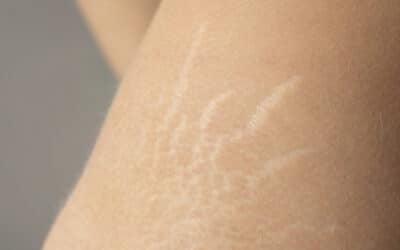Topical steroid withdrawal syndrome (TSWS), also known as red skin syndrome, steroid dermatitis, or topical steroid addiction, is a rare condition that can occur when topical steroids are overused or used for prolonged periods of time. TSWS is characterized by a range of symptoms, including redness, burning, itching, and peeling of the skin, and can be challenging to diagnose and treat. The condition typically develops in individuals who have been using topical steroids to manage underlying skin conditions, such as eczema or psoriasis, and can be triggered by changes in medication, dosage, or frequency of use. In severe cases, TSWS can cause significant discomfort and affect quality of life, highlighting the importance of proper use and management of topical steroids.
The Causes of Topical Steroid Withdrawal Syndrome
The exact causes of topical steroid withdrawal syndrome (TSWS) are not fully understood, but it is thought to be related to the body’s response to prolonged or excessive use of topical steroids. Topical steroids work by reducing inflammation in the skin, which can provide relief from symptoms associated with skin conditions such as eczema and psoriasis. However, overuse or prolonged use of topical steroids can lead to a condition called tachyphylaxis, in which the body becomes less responsive to the medication over time. This can result in the need for higher doses or more frequent application of the medication, which can lead to the development of TSWS. Other factors that may contribute to the development of TSWS include the potency of the steroid, the area of the body where it is applied, and individual factors such as age, skin type, and genetics.

Signs & Symptoms of Topical Steroid Withdrawal Syndrome
The signs and symptoms of topical steroid withdrawal syndrome (TSWS) can vary widely between individuals and depend on the severity of the condition. The most common symptoms of TSWS include redness, burning, itching, and peeling of the skin in the area where the topical steroid was applied. The skin may also become swollen, dry, and rough, and may develop small bumps or blisters. In more severe cases, the affected skin may crack, ooze, or bleed. Systemic symptoms, such as fatigue, fever, and weight loss, may occur in severe cases of TSWS, but are rare. Symptoms typically develop within a few days to a few weeks after discontinuing topical steroid use and can last for weeks to months. It is important to note that the symptoms of TSWS can mimic those of other skin conditions, so a proper diagnosis by a healthcare professional is essential.

Diagnosing Topical Steroid Withdrawal Syndrome
Diagnosing topical steroid withdrawal syndrome (TSWS) can be challenging, as the symptoms can mimic those of other skin conditions such as eczema or psoriasis. The diagnosis is usually made based on a combination of a patient’s medical history, physical examination, and exclusion of other skin conditions. A doctor may ask about the patient’s use of topical steroids, including the type, frequency, and duration of use, as well as any previous treatment for skin conditions. They may also perform a skin biopsy to rule out other skin conditions. In some cases, a patch test may be performed to determine if the patient is allergic to topical steroids. It is important to work closely with a healthcare professional for an accurate diagnosis and treatment plan.

Treatment of Topical Steroid Withdrawal Syndrome
The treatment of topical steroid withdrawal syndrome (TSWS) involves discontinuing the use of topical steroids and managing the symptoms that arise as a result. In most cases, TSWS resolves on its own with time, but it can take weeks to months for the skin to fully recover. During this time, patients may experience significant discomfort and may benefit from symptom management strategies such as moisturizing the skin regularly, avoiding triggers that worsen symptoms (such as extreme temperatures or certain fabrics), and using cool compresses or baths to soothe irritated skin. In some cases, doctors may prescribe medications such as topical calcineurin inhibitors, topical or oral antibiotics, or systemic corticosteroids to help manage symptoms. Natural treatments such as oatmeal baths, aloe vera, and coconut oil may also help soothe and moisturize the skin. It is important to work closely with a healthcare professional to determine the best treatment plan for TSWS.

Preventing Topical Steroid Withdrawal Syndrome
Preventing topical steroid withdrawal syndrome (TSWS) involves careful use and management of topical steroid medications. It is important to use topical steroids only as directed by a healthcare professional, for the shortest duration possible, and at the lowest effective dose. Patients should also avoid using potent or ultrapotent topical steroids on sensitive areas of the skin, such as the face or genital area, as these areas are more prone to developing TSWS. Additionally, patients should not abruptly stop using topical steroids without first consulting with their healthcare professional. Gradual tapering of the medication may be necessary to prevent TSWS from developing. Other strategies to prevent TSWS include maintaining good skin hygiene, moisturizing regularly, and avoiding triggers that can worsen skin conditions. It is important to work closely with a healthcare professional to develop a safe and effective treatment plan for any skin condition.

Using Natural Remedies to Support Healing in TSW
There are several natural remedies that may help support healing in topical steroid withdrawal (TSW). These include dietary solutions, topical applications, and lifestyle changes. One potential natural remedy is to follow an anti-inflammatory diet, which may help reduce inflammation in the body and support skin healing. This may involve eating plenty of fruits, vegetables, whole grains, and healthy fats while avoiding processed foods, sugar, and alcohol. Other lifestyle changes that may support healing include practicing stress management techniques such as meditation or yoga, getting enough rest, and avoiding triggers such as extreme temperatures or harsh chemicals. It is important to note that natural remedies are not a substitute for medical treatment, and it is important to work closely with a healthcare professional to develop a safe and effective treatment plan for TSW.

What Lifestyle Changes Can Help Support Healing in TSW?
There are several lifestyle changes that may help support healing and recovery from topical steroid withdrawal (TSW). One important factor is self-care, which involves taking care of oneself physically, mentally, and emotionally. This may include getting enough sleep, eating a balanced and nutritious diet, engaging in regular exercise, practicing stress management techniques such as meditation or yoga, and seeking emotional support from friends, family, or a therapist. Additionally, it may be helpful to avoid triggers that worsen symptoms, such as extreme temperatures, harsh chemicals, or certain fabrics. Some patients have found relief from TSW symptoms by incorporating natural remedies into their daily routine, such as applying natural emollients like beeswax and natural oils to the skin (we recommend the aerated balm), taking oatmeal baths, or using a humidifier to add moisture to the air. It is important to work closely with a healthcare professional to develop a holistic treatment plan that addresses all aspects of TSW and promotes overall health and well-being.

Dietary Tips for Sufferers of Topical Steroid Withdrawal
Following an anti-inflammatory diet plan may help reduce inflammation and support healing in patients suffering from topical steroid withdrawal (TSW). This diet plan involves consuming plenty of anti-inflammatory foods such as fruits, vegetables, whole grains, healthy fats, and lean proteins while avoiding processed foods, sugar, and alcohol. Some foods that are particularly beneficial for reducing inflammation and supporting skin health include leafy greens, berries, nuts and seeds, fatty fish, turmeric, ginger, and garlic. It may also be helpful to avoid foods that are known to trigger inflammation, such as processed meats, refined carbohydrates, and fried foods. Additionally, it is important to stay well-hydrated by drinking plenty of water and consuming fluids such as herbal tea, coconut water, or bone broth. It is important to work with a healthcare professional to develop a customized dietary plan that meets individual needs and supports healing in TSW patients.

Support Groups & Resources to Help Deal with the Pain of TSW
Dealing with the pain and discomfort of topical steroid withdrawal (TSW) can be challenging, both physically and emotionally. Fortunately, there are many support groups and resources available to help those affected by TSW. Online forums such as the ITSAN (International Topical Steroid Addiction Network) provide a community for TSW sufferers to share their experiences and connect with others going through the same process. Other online resources include blogs, websites, and social media pages dedicated to TSW and natural healing methods.
In addition to online resources, there are also in-person support groups available in some areas. These groups may offer a safe and supportive environment for TSW sufferers to share their experiences, receive emotional support, and learn coping strategies.
It is important to work closely with a healthcare professional throughout the TSW process to ensure proper diagnosis, treatment, and management of symptoms. A healthcare professional may also be able to provide recommendations for local support groups or online resources.
TSW can be a challenging and isolating experience, but with the right support and resources, those affected by TSW can find comfort and healing.





Thank you very much for sharing, I learned a lot from your article. Very cool. Thanks. nimabi
Looking forward to your next post. Keep up the good work!
What type of content would you like to see more of in the future? Let us know in the comments!